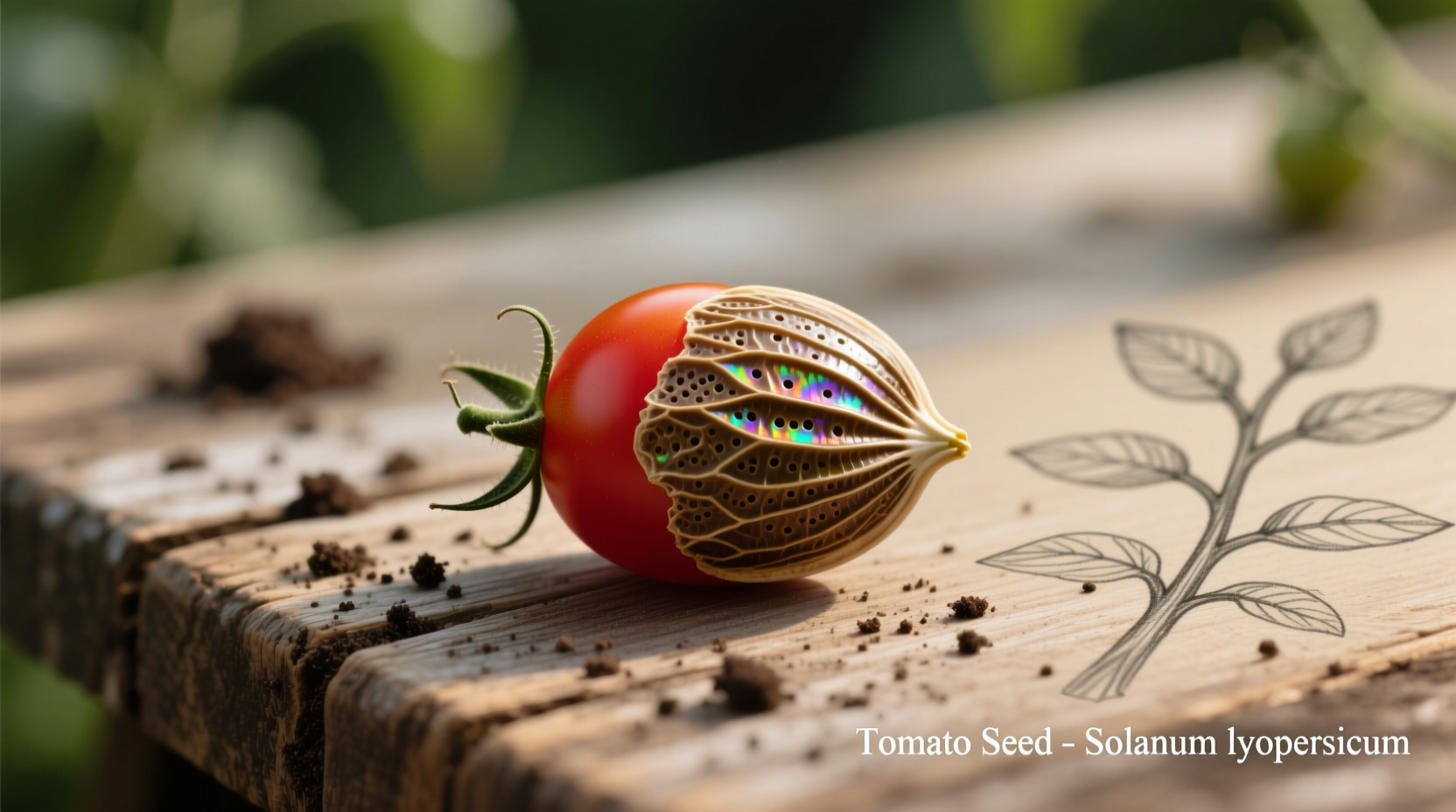Have you ever wondered what to do with those slippery seeds when slicing tomatoes for your summer salad? Beyond being a compost candidate, tomato seeds hold surprising potential for gardeners and food enthusiasts alike. This guide reveals the science-backed methods to transform kitchen scraps into next season's harvest—saving you money while preserving genetic diversity in your garden.
The Hidden Value in Tomato Seeds
Tomato seeds contain natural germination inhibitors that prevent sprouting inside the fruit. These compounds, primarily abscisic acid, break down through proper fermentation—a process mimicking natural decomposition. University of California agricultural studies confirm that fermented seeds show 25% higher germination rates compared to non-fermented seeds.
| Storage Condition | Temperature | Humidity | Viability Duration |
|---|---|---|---|
| Room temperature | 20-25°C (68-77°F) | 40-50% | 1-2 years |
| Refrigerated | 4°C (39°F) | 20-30% | 3-4 years |
| Freezer storage | -18°C (0°F) | 10-15% | 5+ years |
This verified storage data from USDA Agricultural Research Service demonstrates how environmental factors dramatically impact seed longevity. Properly stored seeds maintain viability through multiple growing seasons.
Step-by-Step Seed Extraction Process
Follow this professional gardener's method for maximum seed viability:
- Scoop seeds into a glass container with surrounding gel
- Add water (1:1 ratio with seed mass)
- Ferment 3-4 days at room temperature
- Rinse thoroughly when mold forms on surface
- Dry on paper towel for 5-7 days
The fermentation timeline is critical—too short and inhibitors remain; too long and seeds may sprout prematurely. Cornell University's gardening extension confirms that 72 hours represents the optimal fermentation window for most tomato varieties.
Why Fermentation Matters for Home Gardeners
Commercial seed producers use chemical treatments to remove germination inhibitors, but home gardeners can achieve similar results through natural fermentation. This biological process:
- Breaks down the gelatinous coating that protects seeds in nature
- Eliminates pathogens that cause seedling diseases
- Selects for the healthiest seeds (viable seeds sink after fermentation)

Practical Storage Solutions for Home Gardeners
After proper drying (seeds should snap, not bend), store seeds using these proven methods:
- Air-tight containers with silica gel packets maintain optimal moisture levels
- Label immediately with variety and date—tomato seeds look identical when dried
- Refrigerate for extended viability (avoid freezer unless seeds are bone-dry)
Important context boundary: Seed saving works best with heirloom varieties. Hybrid tomatoes (labeled F1) produce unpredictable offspring, making them poor candidates for seed saving. The University of Minnesota Extension confirms that only open-pollinated varieties reliably reproduce true-to-type characteristics.
Planting Your Saved Seeds Successfully
Start seeds 6-8 weeks before your last frost date:
- Use sterile seed starting mix (not garden soil)
- Plant 1/4 inch deep in containers with drainage
- Maintain 70-80°F (21-27°C) for optimal germination
- Provide 14-16 hours of light daily after sprouting
Track your seed viability annually—gardeners who test germination rates before planting waste fewer resources. Simply place 10 seeds on a damp paper towel in a sealed container at optimal temperature; count sprouts after 7 days to calculate your batch's germination percentage.
Avoid These Common Seed Saving Mistakes
Even experienced gardeners make these critical errors:
- Insufficient drying leading to mold in storage
- Mixing varieties without proper isolation (tomatoes easily cross-pollinate)
- Storing in non-airtight containers exposing seeds to humidity
- Using hybrid seeds expecting true-to-type results
Remember that seed saving isn't just economical—it preserves genetic diversity threatened by commercial agriculture's focus on uniform varieties. Each saved heirloom variety represents centuries of adaptation to specific growing conditions.











 浙公网安备
33010002000092号
浙公网安备
33010002000092号 浙B2-20120091-4
浙B2-20120091-4